Gayle Irwin's Blog, page 28
November 26, 2015
Thankful for the Little Things
 On this Thanksgiving Day, I wanted to share a devotion from my book Devotions for Dog Lovers: Paws-ing for Time with God. May you and your family and friends, including your four-footeds, enjoy a blessed Thanksgiving!
On this Thanksgiving Day, I wanted to share a devotion from my book Devotions for Dog Lovers: Paws-ing for Time with God. May you and your family and friends, including your four-footeds, enjoy a blessed Thanksgiving!Thankful for the Little Things
Enter his gates with thanksgiving and his courts with praise; give thanks to him and praise his name! Psalm 100:4
Willie dashes through the shrubbery and rocks, pursuing a bunny along the wooded trail. A dachshund, Willie is just doing what his ancestors did: chasing and in some cases capturing the rats and other intruders on the farm. Willie's family, my friends, know this behavior is normal for his breed. They live in a big city, so they take
Willie and their other doxie on runs through wooded park areas each weekend, allowing their dogs the opportunity to be... dogs! Willie and his canine companion weave through grasses and brush, zip along dirt trails, and sprint across rocky inclines, doing their doxie doggie dash as they search for rabbits and sniff for songbirds. And, each family member gets exercise in the process!
Willie knows these outings are special, and after a bunny chase or a short run through the woodland, he returns to his human family, looks up and wags his tail, as if thanking them for the opportunity to get outdoors, run, play, pursue, and be... himself! After a “good boy, Willie!” the little short-legged doxie dashes off again, sniffing and running like the dog he's meant to be.
After the outing and back in the car, Willie lays his cheek against his people's cheeks, once again as if saying “thank you.” It doesn't take much to make Willie happy, nor most other dogs for that matter: a warm shelter, a loving family, playtime, good food – all things we humans sometimes take for granted, but yet, many people around the world do not have. How thankful are we for our small yet important blessings?
If you have a house or apartment (a warm, dry place to live and sleep), a car in your driveway, and clean clothes in your closet, you have more material goods than many people in the world. If you make more than $10 a day, you have more money than nearly 80% of the people in the world. If you have food on your table and in your fridge, you're already eating better than almost one billion people in the world. If you can turn on the tap and get clean drinking water, you have more than nearly two billion people in the world. (Note: all statistics based on organizations including World Hunger Education Service and the United Nations.)
How thankful are we for these blessings? Do we, like Willie, run back to our Master and thank him? Or do we go through life taking things like food, clothing, and water for granted, grumbling about what we don't have and constantly asking for more? Let's be thankful, even for the small things!
“Father God, thank you for the multitude of blessings you bestow. Thank you for those things I take for granted: food, clothing, water, family, friends. Forgive me for my ungrateful heart and help me to remember that all good gifts come from you, even those that are small and seem insignificant. Help me to no longer take any good thing for granted. In Jesus' Name – Amen.”
Published on November 26, 2015 10:08
November 11, 2015
Celebrating Seniors!
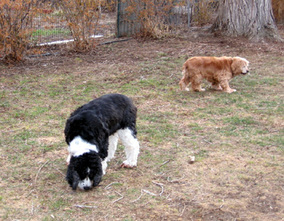 November is Adopt-a-Senior Pet Month. Although many people don't "ooh" and "ahh" over older pets as do with kittens and puppies, there are many benefits to adopting an older cat or dog. Here are a few:Puppies and kittens require a great deal of attention and time, and for busy families, time is something of a commodity. Mature animals can be left alone for longer periods and actually often enjoy ‘down time’. Now, this doesn’t mean they should be locked up in a kennel all day and it doesn’t mean they don’t need exercise – adult dogs and cats just require LESS time and energy than puppies.Young ones require training, such as housebreaking, and a great deal of patience. Older dogs often come housebroken and, in many cases, they have some basic obedience training, such as“sit”, “stay” and “come”. Mature cats are litterbox trained (unless they've been outdoor cats, and even then they pick up quickly).
November is Adopt-a-Senior Pet Month. Although many people don't "ooh" and "ahh" over older pets as do with kittens and puppies, there are many benefits to adopting an older cat or dog. Here are a few:Puppies and kittens require a great deal of attention and time, and for busy families, time is something of a commodity. Mature animals can be left alone for longer periods and actually often enjoy ‘down time’. Now, this doesn’t mean they should be locked up in a kennel all day and it doesn’t mean they don’t need exercise – adult dogs and cats just require LESS time and energy than puppies.Young ones require training, such as housebreaking, and a great deal of patience. Older dogs often come housebroken and, in many cases, they have some basic obedience training, such as“sit”, “stay” and “come”. Mature cats are litterbox trained (unless they've been outdoor cats, and even then they pick up quickly).What you see is what you get when you adopt an adult. Adopting a mature pet allows you to know its size and temperament, whereas adopting a puppy/kitten is sometimes a guessing game when it comes to the animal’s personality, height and weight.Older pets expend less energy and require less activity. Often, a simple walk around the neighborhood for an older dog is sufficient, and you won't wear out your arm in endless hours of playing fetch. So if you’re not terribly active, perhaps a bit older yourself, a more mature dog might suit your lifestyle. Older cats, too, tend to be loungers, so you don't have as much worry about entertaining them as you do with a kitten or young adult cat.Adopting an older pet is truly a selfless, often life-saving act. As an animal ages, its chances of adoption grow slimmer - by giving a mature pet a home, you’re showing great compassion and empathy (and gaining a wonderful furry friend in the process!)Some people think if an older animal is in rescue or at the shelter there must be something wrong with it – not so! Many adult and senior pets are relinquished because the owner can no longer care for them due to the person’s health or even death. Our springer-cocker mix, Mary, came out of such a situation: her special person died suddenly, and the family could not care for her in their current situation, therefore, Mary was turned over to a rescue organization and from there, came to live with us. Mary was nearly seven at the time; she will soon be ten years old and will soon celebrate living with us for three years.
The number one reason people provide for giving up their pet is “I'm moving.” So, chances are the reason the pet is in need of a new home at it's older age has nothing to do with a behavior or other animal issue – it's simply the result of circumstances... and a human's decision.
There's a lot to celebrate about senior pets! Some of the most wonderful companion animals in need of new homes are older ones awaiting another chance to shower a family or individual with devotion, just as they did with their previous owner.
So the next time you have opportunity to provide a dog or cat with a home, please consider adopting an adult or senior pet. Like my husband and I, you, too, will know the joy of spending time with an adoring, mature four-footed friend and giving that animal a special, loving retirement home. Let's celebrate seniors and provide love and companionship to the older pets in need of adoption!
Published on November 11, 2015 08:03
October 19, 2015
Caring for an Older Pet
 There is no escaping aging, not for people and not for pets. As with us, when pets get older more health problems arise. Yet, again as with us, there are things we can do to help them age with grace and dignity. Here are some tips:All pets need good nutrition, but for older ones, that’s vital. Many pet food companies make specialty foods for senior pets as well as food for special dietary requirements and problems, such as digestive issues.As dogs and cats age, their immune system becomes weaker; that means greater potential health risks caused by ticks, fleas, worms, and other pests. Talk to your veterinarian about the safest preventative measures for your senior pet.Consider visiting the vet with your aging pet twice a year instead of just once. Appointments include many of the same routine checks as for younger animals, but they may also include additional blood work, dental care, and exams for symptoms of issues common to seniors, such as arthritis and cancer.
There is no escaping aging, not for people and not for pets. As with us, when pets get older more health problems arise. Yet, again as with us, there are things we can do to help them age with grace and dignity. Here are some tips:All pets need good nutrition, but for older ones, that’s vital. Many pet food companies make specialty foods for senior pets as well as food for special dietary requirements and problems, such as digestive issues.As dogs and cats age, their immune system becomes weaker; that means greater potential health risks caused by ticks, fleas, worms, and other pests. Talk to your veterinarian about the safest preventative measures for your senior pet.Consider visiting the vet with your aging pet twice a year instead of just once. Appointments include many of the same routine checks as for younger animals, but they may also include additional blood work, dental care, and exams for symptoms of issues common to seniors, such as arthritis and cancer.Regular exercise is still important, helping your pet be mobile longer and preventing obesity, which can lead to diabetes and other medical issues. However, just because your dog could handle an hour-long walk a year ago doesn’t mean s/he can do that today -- watch for signs that s/he’s had enough and honor his/her abilities (or lack thereof) due to age.Monitor your dog or cat for signs of arthritis – there are medications and other treatments to alleviate the pain. Visit your local pet supply store and talk with your veterinarian if your pet shows signs of joint pain.Maintaining healthy teeth and gums is also crucial to your senior pet’s overall health. That can be accomplished with regular at-home brushing and professional cleanings by your vet.Studies show that as pets age, their cognitive abilities can diminish. In fact, the term “doggie dementia” is not a laughing matter. Studies at Ohio State University College of Veterinary Medicine found signs of cognitive impairment in 28% of dogs ages 11-12 and 68% of dogs 15-16, and in 28% of cats ages 11-14 and 50% of cats 15 and older. (See more information at http://www.goodpetparent.com/2015/06/12/canine-cognitive-dysfunction/). Although as with people, not much can be done to stop the progression of such a disease, there are medications available and engaging your pet in physical and cognitive activities can be beneficial.If your pet’s behavior changes suddenly, there could be a medical issue going on (another good reason for twice a year checkups instead of annual ones). Ensure your senior pet’s overall health with regular visits to the vet, and if a behavior change arises, check for possible medical reasons.We can enjoy our furry companions for many years, sometimes as long as 20, depending upon the type of pet and the breed of the animal. I had a cat who lived to be nearly 19 years of age. She was adopted from an animal shelter when she was almost two and I was nearly 29 years old, providing me with many years of joy and love. After I married, my husband and I adopted a 10-year-old cocker spaniel from our local shelter; Cody is now nearly 18 years old. Although we never expected him to live this long, we are thankful for the years together. He is now deaf and nearly blind, but he still enjoys snuffling around the backyard and walking in the woods around our cabin on three acres of forest land. His pace is slow but his spirit maintains vitality.
Older pets give us deep devotion; we should return the sentiment. The Grey Muzzle Organization, dedicated to helping homeless senior dogs, offers a free downloadable e-book on how to care for an older dog. Visit http://www.greymuzzle.org/Resources/Senior-Dog-Care.aspx to get this great resource.
Another great online resource for caring for a senior pet is PetMD: http://www.petmd.com/dog/care/evr_dg_caring_for_older_dogs_with_health_problems#.
Enjoy the years with your furry friend, no matter its age –loyalty runs in their veins!
Published on October 19, 2015 17:55
October 14, 2015
Tips for Effectively Grooming Your Pet
 With the changing seasons come changes to our pets' coats. Grooming our animals is vital, not just because they look nicer, but also because grooming is good for their overall health. Here are a few tips to help you help your pet maintain good health through regular “spa sessions:”
With the changing seasons come changes to our pets' coats. Grooming our animals is vital, not just because they look nicer, but also because grooming is good for their overall health. Here are a few tips to help you help your pet maintain good health through regular “spa sessions:”Go slowly and gently. Whether or not your dog or cat is used to being groomed, gentle and slow is best for your pet; that's especially true if your animal is not used to being brushed or bathed. Tangles in the fur can be painful if pulled roughly with a brush or comb (there are special tools to use when trying to get out mats and tangles), and bath time will not be a joyful experience for either of you if you man-handle your pet.Take your pet to a professional groomer at least a few times a year, and if you have a long-haired cat or a specific breed of dog that needs regular clipping, you will need to go more often. Get recommendations by talking with friends or your veterinarian (some vets have a groomer on staff).If you're pet isn't keen on the idea of brushings and bathings, associate a positive thing (such as a special treat, playtime after the grooming session, or dinnertime after the “pet spa”). By incorporating a positive experience, such as treats or play, with the less positive grooming session, your pet may be more apt to accept “spa time” knowing “treat time” comes afterward.Clipping nails and brushing teeth are also recommended. The proper items for these procedures can also be purchased at a pet supply store or through your veterinarian. If you do clip nails, make sure you don't cut the quick, which can bleed profusely. Groomers and veterinarians may be the best choice for nail trims unless you are completely comfortable doing the job. Brushing teeth takes time to get used to by both pets and owners – start with massaging your dog's muzzle for several days, then put the pet toothpaste (human toothpaste can make your pet sick) around the gums and lips, and then graduate to the specially-designed pet toothbrush. Talk with your veterinarian about the proper way of brushing your pet's teeth and what abnormalities to watch for – healthy teeth and gums are important.If you have a long-haired cat or dog and you discover mats, experts caution pet owners to not clip those – you might cut yourself or your pet. Instead, take your furry friend to a professional groomer or even to the vet – mats are painful and the animal made need to be shaved to get those out.Use proper tools. There are a variety of combs and brushes from which to choose depending upon the thickness of your pet's coat. Talk with your veterinarian or the pet supply store clerk about which types of grooming tools to use for your particular pet.Regular grooming helps create a greater emotional attachment in addition to helping your pet stay healthy physically. Spending time together is important for pets and their owners, and grooming sessions offer that important time.
Through this process, you can note changes to your pet's coat and skin, such as growths and dryness, and watch for parasites, like fleas and ticks. Bathing also maintains a healthy coat. Although cats don't need baths as much as dogs do, a cat's coat also becomes dirty, especially if your kitty spends time outside.
Long-haired cats need daily brushing to keep tangles and mats from forming, and even short-haired cats benefit from weekly grooming. Even though cats groom themselves, the activity you provide lessens the amount of hair they ingest from self-grooming; hairballs show up on your floor or in the litter box, so the more you brush your cat, the less likely hairball cleanup you'll do.
Specific breeds of dogs require regular, sometimes extensive, grooming. Therefore, before you get a dog, consider the grooming needs of that breed. You can learn about the grooming requirements of various dog breeds at these websites: http://dogtime.com/dog-breeds/characteristic_lists/grooming-effort-required and http://www.animalplanet.com/tv-shows/dogs-101/ .
Take time to provide regular grooming for your pet and you will help your furry friend be more healthy.
Online resources about grooming:
https://www.aspca.org/pet-care/virtual-pet-behaviorist/dog-behavior/grooming-your-dog
http://www.vetstreet.com/learn/the-importance-of-grooming-your-pet
https://www.aspca.org/pet-care/cat-care/groom-your-cat
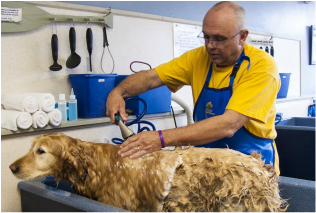
Published on October 14, 2015 21:39
September 22, 2015
Choosing the Right Dog During Adopt-a-Shelter Dog Month
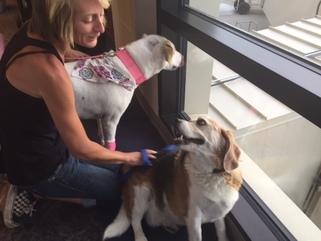 Every year, about seven million animals go into shelters and rescues across the country. Dogs, cats, rabbits, horses, guinea pigs, parakeets, and other animals come in as stray, are abandoned, or given up for various reasons. Nearly half of those that enter shelters are killed.
Every year, about seven million animals go into shelters and rescues across the country. Dogs, cats, rabbits, horses, guinea pigs, parakeets, and other animals come in as stray, are abandoned, or given up for various reasons. Nearly half of those that enter shelters are killed.October is National Adopt-a-Shelter Dog Month. The numerous rescue organizations, animal shelters, and humane societies across the country take in the stray and unwanted, and for people seeking to adopt, there's a plethora of animals from which to choose. And so there are questions: Which breed of dog? What type of pet? Dog? Cat? Rabbit? Lizard? Parakeet? Fish?
How do you choose?
First, consider your lifestyle. Are you home a lot or gone? Are you an active person or a couch potato? Do you want an animal that needs to be with you a lot or one that's independent? Do you have time to walk and play with a pet? Dogs especially crave the attention of their people; they are pack animals and mostly social, so getting a dog and then leaving it for hours on end, indoors or outdoors, and neglecting that desire to be with you can lead to destructive behaviors and abandonment anxiety.
Second, consider the allergy factor – does anyone in your family have allergies to pet hair/dander? Are you allergic to bird feathers? Even though many people with allergies have pets, it's also a big reason people turn animals into shelters and rescues. If you or someone in your house is severely allergic to animal hair/dander, then consider having a reptile, like a lizard or turtle, or a variety of fish for a beautiful aquarium.
Third, do you expect a life change in the near future, such as moving or having a baby? These are also main reasons people bring animals to the shelter. Keep in mind a pet is a major responsibility and should be a lifetime commitment. Dogs and cats in particular attach themselves to their human families, and it's very traumatic for them to go from living in a home to a shelter situation, behind bars, on cold concrete, amid other barking dogs and meowing cats. Therefore, don't think of a pet as a temporary resident, but as a member of the family, and if you think you'll be making a major life change in the near future, postpone getting a pet until your life is more settled.
Fourth, research the different breeds of dogs and cats and the other types of animals people have for pets. Understand that terriers dig, beagles bay, corgis herd, cats claw, and longhaired felines need regular grooming. Most dogs and cats shed and bird and hamster cages need regular cleaning. Know what you're in for BEFORE you add a pet to your home and learn about the personality traits and habits of different breeds. Also recognize the needs of the various types of animals before you adopt.
Lastly, don't adopt on a whim and don't “gift” an animal, no matter whether it's a dog, cat, kitten, puppy, hamster, rabbit, or other creature. Remember the previous tips about understanding the needs of the animal and the responsibilities of pet ownership. Don't surprise someone and don't get an animal for yourself or your family without the knowledge base of which pet best fits your life. If you want to “gift” a pet, offer to pay the adoption fee for someone and let them choose the pet themselves. If you're considering giving your children the “gift” of a pet, keep in mind mom and dad are ultimately responsible for the care and cost of the pet... and even a “free pet” costs money for vet care, food, and other supplies … and pets take time, especially dogs. As a family, research the various types of pets and the different breeds of dogs and cats, and spend time together at the shelters and rescues to find the right animal that fits your family's lifestyle and personalities. A good opportunity to do that comes during Christmas break, when you can visit the facilities frequently and spend time with the various animals available for adoption … and you have the time after the holiday with your new family member before it's left alone when the kids return to school and you return to work.
The ASPCA (American Society for the Prevention of Cruelty to Animals) provides a list of pros and cons to adding a pet to your home. They offer tips and guidelines for those considering adopting a dog, a cat, a hamster, a guinea pig, a rabbit, or having a fish. View these tips, and other important pet information, at the organization's website: https://www.aspca.org/adopt/adoption-tips/right-pet-you.
So, which pet is the right one? The one that is right for you!
Published on September 22, 2015 07:09
September 3, 2015
Celebrating Dogs by Honoring Responsibility
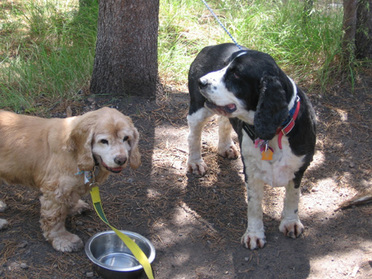 Pet owners don’t need a special time to honor and celebrate their pets, but during the month of September the American Kennel Club and other organizations remind owners that dogs are a major responsibility and these groups honor dogs and dog owners in various ways.
Pet owners don’t need a special time to honor and celebrate their pets, but during the month of September the American Kennel Club and other organizations remind owners that dogs are a major responsibility and these groups honor dogs and dog owners in various ways.National Dog Week is generally observed the last week of September; it's a time when dog owners and various organizations honor dogs. William Judy, who started Dog World Magazine during the 1920s, first set aside this special week as a way to celebrate those special creatures most consider “man’s best friend”.
The American Kennel Club ( www.akw.org ) honors both dogs and owners during Responsible Dog Ownership Days. The AKC is hosting a major event in North Carolina on September 19, and various AKC chapters will host activities highlighting the joy (and responsibility) of owning a dog throughout September. People and organizations can register the many activities they do with their dogs to impart responsibility. To learn more, visit http://www.akc.org/events/responsible....
Dogs are fun, dogs are loyal, and dogs are a major responsibility. Sadly, many people ignore that fact and treat their dog like a commodity instead of living, breathing being. That's why we have so many dogs in shelters, thousands of which are killed every day in those facilities. Pet ownership irresponsibility is also why there are so many animal rescue organizations that try to find new homes for abused, unloved, unwanted animals. People need to realize and recognize not everyone needs to, or is cut out to, have a pet. If you can't/won't take care of a dog or cat properly, which means providing it not just food, water and shelter, but also love, loyalty, and attention, then DON'T GET ONE! Get a plant or a pet rock instead.
I have had pets since I was seven years old. I didn't always understand the major responsibility it took to have a pet, but as an adult I learned that responsibility, and I love and appreciate the animals in my care. They bring me joy, companionship, and devotion; they lift my spirits, comfort me when I'm sick, and stick by me when I've felt alone and abandoned by human beings. I am thankful, so very thankful, for my pets!
I enjoy sharing the lessons dogs (and cats) can teach us, and I share many of those lessons (of life and faith) in the books I write and the presentations I give. Dogs and cats have served humankind for thousands of years, from rodent control to family and property protector. Native Americans and other cultures used dogs to transport loads (prior to tribes getting the horse). Still today, dogs serve people in a variety of ways: herding and protecting flocks; finding fowl in the field; guiding the blind; assisting wheel-chair bound individuals; rescuing lost children; and bringing smiles to those in hospital beds. And, still people mistreat, maim, and kill these precious living creatures out of evil, spike, and sometimes just a lack of knowledge. Education and empathy are keys to stopping the cruelty and neglect people still inflict upon dogs and cats, and other animals.
May those of us who cherish and appreciate dogs take time to do something to honor and celebrate canines this month. May we also take time to educate others, especially children, to be kinder to animals and to be responsible pet owners. Consider attending a special event near you for Dog Ownership Responsibility Day and take family members and friends. And may we all do our part to help animals in need by helping rescue groups and shelters in our communities. National Dog Week and Responsible Dog Ownership Days can be the catalyst for positive change in how our society views and treats animals.
Published on September 03, 2015 20:38
August 24, 2015
Late Summer Safety Tips
 Summer is not yet finished. August's “Dog Days” bring unique safety concerns for our pets. Here are a few tips for keeping your pets safe for the remainder of this summer:
Summer is not yet finished. August's “Dog Days” bring unique safety concerns for our pets. Here are a few tips for keeping your pets safe for the remainder of this summer:Don’t leave pets unattended in your vehicle. We still have 90 degree days ahead of us, and cars quickly heat up to dangerous temperatures, even with the windows slightly open.
Ensure your pets’ vaccinations are up-to-date and that heartworm, flea and tick medications have been administered. Summer brings out rabies-carrying creatures, such as skunks and raccoons, and fleas and ticks are abundant this time of year as well. Protect your pets! Consult your veterinarian for more information on heartworm, Lyme disease, rabies and other life-threatening diseases.
If you take your dog boating or swimming with you, consider a pet life vest. Contrary to what many people think, not all dogs swim or swim well. Dogs can and do drown. Even the best of swimmers, like Labrador retrievers, can lose their life in the water, especially a swollen, fast-moving river or stream so ensure your pet’s safety in and near the water.
If your dog spends time outdoors in a kennel, ensure he has plenty of fresh, cool water and shelter. Rain and thunderstorms can pop up quickly, particularly in the afternoon when you may be elsewhere, such as work. And, NEVER chain or tie your dog out – lightening striking a nearby tree, heat exhaustion, dehydration and numerous insect bites are just a few of hazards posed to tethered dogs.
For your cat’s protection, keep her indoors. Cats can be purr-fectly content indoor pets – they just need is a bit of playtime, a cat tree and other enrichment. Keeping your kitty indoors protects her from death by car, rabies from roaming creatures, and other safety issues, such as other cats and roaming dogs.
Pesticides, weedkiller and other chemicals pose dangerous risks to pets and may even result in death. Ensure your pet cannot get into any of these hazardous products, and highly consider using organic products for your garden and yard.
If your pet travels with you, make sure his/her ID tags are on the collar – you might even consider microchipping your pet before traveling. Also, use a leash to walk your pet for its bathroom break. One of the worst ways to ruin your vacation is to lose your pet.
Prior to traveling, look into accommodations that accept pets. Here are a few websites that can help you plan your pet-friendly vacation: www.petswelcome.com and www.petsonthego.com .
If you don’t take your pet on vacation with you, look into hiring a reliable pet sitter. Ask friends or your vet for recommendations or check out Rover.com.
NEVER leave your pets home alone if you’re gone for an extended period of time. Even asking friends to “drop by” to feed and water isn’t enough. Things can happen if a pet is left alone for days – running out of water, yard and house destruction, incessant barking which can result in upset neighbors – and possibly a fine to you by animal control.
School resumes soon (or already has started) – make sure your yard gates are locked and that your outdoor fencing is secure and also make sure your pets don't get out when people are opening and closing the front and back doors. Your dog especially may try to follow the kids to school – after all, they've been pals around the house and yard all summer. Ensure your pets' safety as kids head out the door to school.
Follow these guidelines and enjoy these last “dog days of summer” with your pet!
Published on August 24, 2015 10:16
August 8, 2015
6 Life Lessons We Can Learn from Dogs
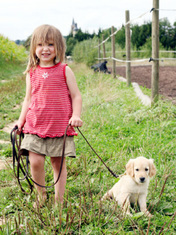 The small Shitz Tzu who lays in the chair next to the livingroom window, longing for its human friend to return home; the Labrador retriever who obediently brings back the duck brought down by the hunter; the golden retriever who patiently guides its blind person; the abused cocker spaniel who tentatively licks the cheek of its rescuer; the bulky German Shepherd that bravely follows his K9 officer into a violent situation; the long-haired dachshund that lays quietly beside the sick in a hospital bed – all of these canines exhibit qualities to which humans can relate and from which we can learn.
The small Shitz Tzu who lays in the chair next to the livingroom window, longing for its human friend to return home; the Labrador retriever who obediently brings back the duck brought down by the hunter; the golden retriever who patiently guides its blind person; the abused cocker spaniel who tentatively licks the cheek of its rescuer; the bulky German Shepherd that bravely follows his K9 officer into a violent situation; the long-haired dachshund that lays quietly beside the sick in a hospital bed – all of these canines exhibit qualities to which humans can relate and from which we can learn.Dogs showcase amazing and true life lessons, from loyalty to forgiveness, from friendship to sacrificial service. Below are just six out of numerous life lessons dogs can teach us:
Compassion – The dog who stays with the lost child or the dog who jumps into the water to save someone who is drowning: each epitomizes the quality of compassion, caring for someone beyond the concern for oneself. With all the violence that pervades this world, it can be easy to become stoic and desensitized to the suffering around us. Yet, dogs that exhibit kindness toward not only their own household but to complete strangers remind us humans to care for the fellow beings that share our planet.Forgiveness – for dogs locked in cages in puppy mills, used for research purposes, or abused through kicks, curses, and other cruelties, it's a wonder more canines aren't more mean or defensive. Instead, the majority of dogs from abused and neglected situations still long for and respond to love and care. They are forgiving towards the creatures who have made their lives fearful and miserable – humans. Puppy mill and other abused and neglected dogs may take more time to trust and warm up to people, but when given that necessary time and much-desired closeness, they return that affection and forgive the ugly past, embracing a new present and beautiful future.Friendship/Loyalty – most dog owners cannot help but notice the loyal friendship dogs provide. Walks, playtime, drives in the car, or simply sitting on the couch watching TV are pictures of true companionship shared between humans and dogs. At times that loyalty is projected like a beacon when a dog's human family is threatened. From burglars chased to vigilance of fire or seizures, dogs alert and protect their owners from perceived – and sometimes real – dangers. Humans abandon one another, and their pets – dogs don't. Service – such loyalty and friendship is clearly evident in the canines who serve. Whether it's a guide dog for the blind, a service dog for the disabled, a therapy dog to the sick and elderly, a herding dog for the rancher, or a retriever/pointer for the hunter, dogs serve humankind in many ways. Training is involved in these endeavors, yes, but the caring and connection between a dog and its special person is clear when service and dependability is needed. Sometimes that service is sacrificial, such as the K9 dog or military service dog losing its life in the line of duty or the family pet protecting its household from an intruder. Dogs are giving creatures and they receive little reward for their service.
Courage – many of these service dogs exhibit bravery as do other dogs as well. The canine lost in the woods who travels many miles to return home; the guide dog stepping out into traffic and riding the subway with its blind human; the search dog combing woods or collapsed buildings for the lost stranger – each showcase courage in the midst of chaos and confusion. In the midst of darkness, noise, and strange circumstances, dogs can display amazing calm despite trouble and tribulation.
Perseverance – much of life is about endurance, and dogs display amazing persistence. In spite of bad circumstances, despite the situations they encounter, and amidst the training many dogs go through, their perseverance rarely wavers. They take each day as it comes, and live in the moment. They don't plan future, set aside wealth, or worry about tomorrow – they enjoy the here and now. And when situations become bleak, such as being tethered to trees and left without food, water, or care, they attempt to change the situation by digging, chewing, or crying out for help – they persist in making life the better … or the best it can be.
Dogs exhibit amazing qualities and they can teach people invaluable life lessons … if only we open our eyes and hearts to such character education.
Published on August 08, 2015 19:38
July 14, 2015
Prevent Your Pet from Getting Lost – and Resources to Help If It Does
 If you've ever had a pet become lost, you know the worry and concern. Every year stray cats and dogs come into community animal shelters, and many times those pets don't return home.
If you've ever had a pet become lost, you know the worry and concern. Every year stray cats and dogs come into community animal shelters, and many times those pets don't return home. From unlocked gates to unleashed animals, pets of all types can find themselves roaming city streets or mountain forests. There are several easy ways to prevent this from happening, ideas to help you find your furry friend if indeed it does become separated from you.
Make sure your fences are secure and the gates are locked. Whether it's your kids, the power guy, or the person installing your new brick patio …backyard gates can become accidentally unlocked. Double and triple-check your fences and gates for potential pet escape hatches.
Many pets are afraid of loud noises, like thunderstorms and fireworks. Ensure your anxious animal is somewhere safe during storms, parties, and festivities. If your dog or cat is especially scared of noises, consider getting a Thundershirt to calm him/her. Learn more at http://www.thundershirt.com/ .
Walk your dog or cat on a leash. Pets, especially dogs, can be easily distracted by squirrels and other animals. Running off to chase something can mean never seeing your beloved pet again. Leashes keep him/her securely with you.
Have your pet wear a collar with ID tag and seriously considering having a microchip implanted in your pet. Outer identification will help your dog or cat return home more quickly if a Good Samaritan finds it or if they turn your pet into the local shelter. Shelters use scanners to determine if the animal has a microchip. If your pet does have a microchip, make sure the information is current so a shelter worker can contact you.
Purchase and use a tracking device, such as the Marco Polo. My husband and I have a springer spaniel and she wears the Marco Polo tool every time we go outdoors – she's one of those dogs that gets easily distracted and loves to chase birds, squirrels, etc. These GPS-style trackers are amazing technologies.
If your pet does become lost, visit your local shelter. Many animals don't get back home simply because no one comes to look for and claim them. Our pets rely on us to take care of them, to be as devoted to them as they are to us, and one way we show that faithfulness is to search for them when they become lost. We look for our children if they get lost – do the same for the other creatures that depend on you for care. Don't just call the shelter, visit, and visit often. Don't rely on someone who doesn't know your animal to tell you if it’s there or not – go see for yourself.
There are many fascinating stories about wayward animals traveling 35, 100, even 200 miles to get back home. Even the movies showcase the determination pets can have to return home (“Homeward Bound 1 and 2”...). But, don’t expect that – instead, make it easy for your pets by insuring their safety at and away from home so they don't get lost in the first place. And, should your animal get away from you, be a responsible, caring owner and search for your pet.
Below are a few resources that can help you keep your pet from going astray or helping you find it should it become lost:
http://www.petrescue.com/petlibrary/pet-rescue/how-to-find-a-lost-cat-or-dog/
https://www.petfinder.com/dogs/lost-and-found-dogs/find-lost-dog/ .
http://www.consumerreports.org/cro/magazine/2012/04/how-to-track-a-lost-animal/index.htm s:
http://www.vetstreet.com/our-pet-experts/lost-pet-tech-comparing-cat-and-dog-tracking-collars
http://eurekaproducts.com/ .
Published on July 14, 2015 06:06
June 22, 2015
Take Your Dog to Work - It Might Lower Your Blood Pressure!
 Most of us have heard the expression "working like a dog...” and many times we feel that way! Military dogs, K-9 dogs, hunting and herding dogs … they all have jobs to do, and when they get into that work mode, their noses, ears, eyes, and legs just don't quit! Sometimes we humans are that way as well – can't shut off our brains and bodies long enough to relax. Well, on Friday, you and your dog can share that work load together – Friday, June 26, 2015 is “Take Your Dog to Work” Day!
Most of us have heard the expression "working like a dog...” and many times we feel that way! Military dogs, K-9 dogs, hunting and herding dogs … they all have jobs to do, and when they get into that work mode, their noses, ears, eyes, and legs just don't quit! Sometimes we humans are that way as well – can't shut off our brains and bodies long enough to relax. Well, on Friday, you and your dog can share that work load together – Friday, June 26, 2015 is “Take Your Dog to Work” Day!Sponsored by Pet Sitters, International, this fun “special day” promotes the joy of canine companionship and also pet adoption. It was first celebrated in 1999.
Several companies encourage their workers to bring their dogs to the job. According to FastCompany.com, some of those businesses include Google, Etsy, Amazon, and Bark & Co (I'd be horrified if a pet supply company wouldn't allow pets at their business!)
My husband often has our dog Mary at the business with him – his office is located in the downstairs of our home, and my husband often works from there. Mary loves to hang out with him as he creates DVDs and other products!
When I worked as editor of the West Yellowstone News, my cocker spaniel, Sam, often came to the office with me, especially on the longer production days. He would lie on the rug underneath my desk in winter or on the cool, cement floor during the summer months, providing companionship during those long, difficult hours of putting the paper together (this was in the days before page layout programs on computers). Then, at midnight or 1 am when I'd leave the office, he'd plod alongside me as we walked the few blocks from the newspaper's office to the little house I rented, and we'd share popcorn or potato chips on the couch as I “wound down” from the 18- 20 hour ordeal.
Today, as I write articles freelance in my home office/sun room, I'm often surrounded by my pets, either the cats, the dogs, or both -- they all enjoy lying on pet beds or on the rug near my desk basking in the sunlight filtering through the room's many windows. There's just something comforting about one's pet lying at your feet (or at least somewhere nearby), and that “something” stimulates creativity, generates joy, and makes work less stressful.
Scientists have noted the physical and emotional benefits of having pets. Experts show that the simple act of petting a dog or cat lowers blood pressure, and the kind gestures they give, such as a dog head on a human knee, brings smiles to our faces.
So talk to the boss and see if this Friday can be “Take Your Dog to Work Day” at your company/office – having your furry friend there just might brighten everyone's day at the office and make it a more pleasant place to be this Friday!
Find out more about Take Your Dog to Work Day at the organization's Facebook page: https://www.facebook.com/takeyourdog.
Published on June 22, 2015 13:28



